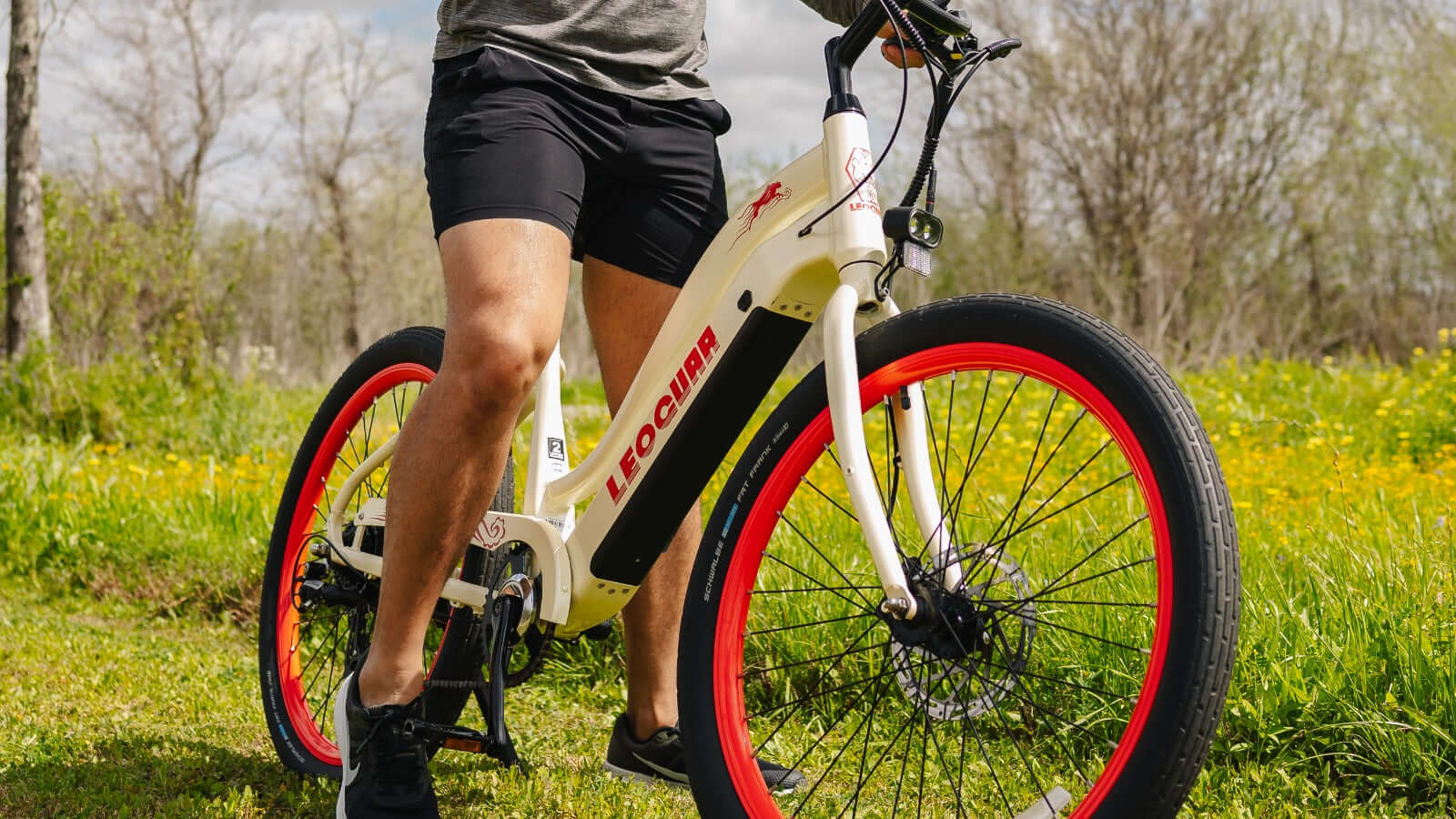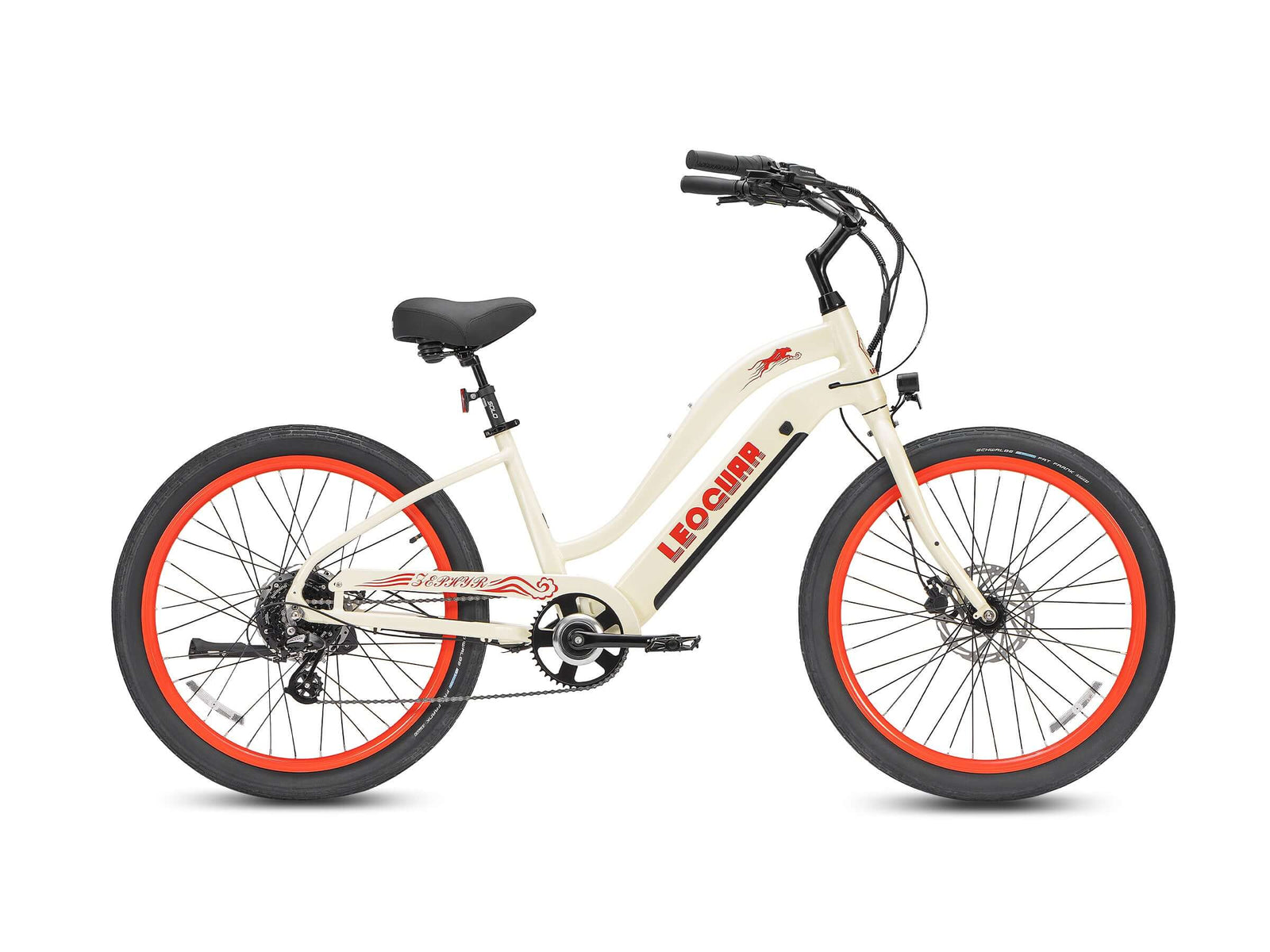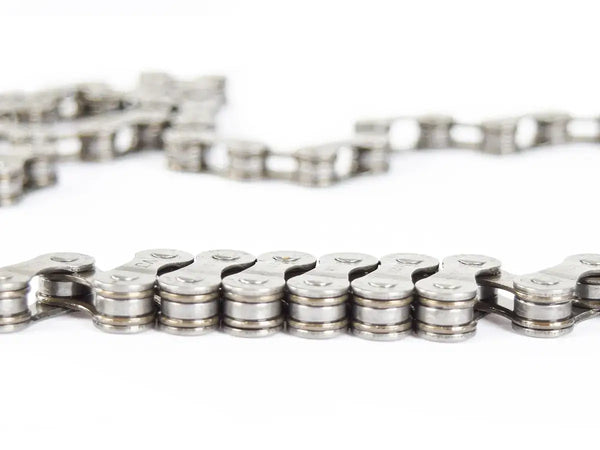
Lube Ebike Chain Guide: Wet vs Dry for the Best Ebike Performance
Here's what you need to know: Use a dry or wax-based bicycle chain lube for dry, dusty conditions. For wet, muddy, or winter conditions, an oil-based wet lube works best.
Picking the right lube is one of the most important maintenance tasks for your e-bike. It's not just about a quiet ride. The correct lubricant makes shifting smooth, helps your expensive drivetrain parts last longer, and saves you money on costly repairs. For an e-bike, which delivers much more power and torque through the chain, this choice becomes even more important.
This guide will explain why e-bike drivetrains have special needs. We'll look closely at the different types of bicycle chain lube. Then we'll provide a professional, step-by-step application method to keep your ride in top condition.
E-Bike Drivetrain Demands
An e-bike isn't just a bicycle with a battery. Its motor changes the forces acting on your drivetrain, demanding a stronger lubrication strategy. Generic advice often fails because it doesn't account for these important differences.
Higher Torque and Power: Unlike a traditional bike where power is applied gradually, an e-bike motor delivers instant and sustained torque. This puts huge strain on the chain's rollers, pins, and plates. A weak lubricant film will be squeezed out under this pressure, leading to metal-on-metal contact and faster wear.
Increased Mileage and Load: E-bike riders typically cover more ground, more often, and often carry more cargo. The bike itself is also heavier. This combination of higher mileage and constant load means your chain is working harder for longer. A durable bicycle chain lube is essential to provide continuous protection.
The "Grinding Paste" Effect: This is the number one killer of electric bike drivetrains. When a poor lubricant mixes with dirt and grit under the high pressure of the motor, it creates a thick, rough "grinding paste." This paste actively sands away the metal on your chain and cassette cogs with every pedal stroke. A well-lubricated e-bike chain can last thousands of miles, while a poorly maintained one might be destroyed in under a thousand, turning a simple maintenance task into a several-hundred-dollar repair.
Wet Versus Dry Lube
The two main categories of electric bicycle chain lube are wet and dry. Understanding their basic differences is the first step to making a smart choice.
What is Wet Lube?
A wet-style bicycle chain lube is typically oil-based with a thicker, more sticky consistency. It goes on wet and stays wet on the chain, creating a durable, liquid barrier. This barrier is excellent at keeping water away and resisting being washed off in heavy rain or from puddle splashes, making it the go-to choice for winter riding, muddy trails, and long-distance touring in unpredictable weather.
What is Dry Lube?
A dry-style bicycle chain lube consists of friction-reducing particles, like PTFE (Teflon) or wax, suspended in a fast-evaporating carrier fluid, often an alcohol. You apply it wet, the carrier fluid evaporates, and it leaves behind a dry, non-sticky film. This clean surface is its greatest advantage, as it doesn't attract the dust, sand, and grime common in dry or summer conditions.
For a clear side-by-side comparison, see the table below.
| Feature | Wet Lube | Dry Lube |
|---|---|---|
| Best Conditions | Wet, Muddy, Snowy | Dry, Dusty, Clean |
| Durability | High (lasts longer) | Lower (needs frequent reapplication) |
| Cleanliness | Attracts dirt, creates "gunk" | Stays very clean |
| Protection | Excellent water and rust protection | Minimal water protection |
| Application | Apply sparingly, wipe excess thoroughly | Apply liberally, let carrier evaporate |
Advanced Lube Options
The simple wet vs. dry debate doesn't cover the full picture anymore. Modern lubricant technology offers more detailed options that are particularly well-suited for the high demands of e-bikes.
Wax-Based Drip Lubes
These are rapidly becoming the top choice for performance-oriented riders. Wax-based drip lubes are a hybrid: they are applied as a liquid, much like a dry lube, but the carrier fluid evaporates to leave a hard, dry shell of paraffin wax on the chain.
- Pros: They run exceptionally clean, as dirt has nothing wet to stick to. They are also incredibly efficient, reducing friction to a bare minimum.
- Cons: The main drawback is the initial preparation. For the first application, the chain must be stripped completely bare of all factory grease and old lubricant.
- The E-Bike Advantage: The efficiency and cleanliness of wax are a massive benefit for high-power e-bikes. In fact, independent scientific lab tests have shown that premium wax-based lubricants can reduce chain wear by a factor of ten or more compared to basic oils—a game-changer for protecting your expensive drivetrain.
Ceramic Lubes
You will often see "ceramic" advertised on lubricant bottles. These are typically a wet or dry lube that has been mixed with microscopic ceramic particles, like boron nitride. The theory is that these particles act like tiny ball bearings, embedding into the metal surfaces of the chain to reduce friction and wear. While some high-end ceramic lubes show measurable benefits, performance can vary wildly between brands. They can offer an edge, but a high-quality wax lube often provides more dramatic and consistent results.
"All-Conditions" Lubes
The "jack of all trades, master of none," an all-conditions bicycle chain lube attempts to strike a balance between the durability of a wet lube and the cleanliness of a dry lube. It typically has a medium thickness. For riders in moderate climates without extreme wet or dusty conditions, or for those who value the simplicity of a single-bottle solution, it can be a decent compromise. However, be aware that in truly wet weather, it will wash off faster than a dedicated wet lube, and in dusty conditions, it will attract more dirt than a dry or wax lube.
Pro Application Guide
Applying new lube to a dirty chain is the single biggest mistake in bicycle maintenance. It does more harm than good. The goal is to get clean lubricant deep inside the chain's rollers. Following these steps ensures you do it right every time.
Step 1: Prep and Clean
Before you even open your new bottle of bicycle chain lube, the chain must be spotless. Use a dedicated bicycle degreaser and a stiff brush or a chain-scrubbing tool. Apply the degreaser and scrub the chain, cassette, and chainrings until all the black gunk is gone. For an e-bike, always have the power turned off. Be cautious around the motor housing and battery connections; avoid spraying degreaser or water directly into these areas. Never use a high-pressure water jet, as it can force water past seals and into sensitive electronic components or bearings.
Step 2: Dry The Chain
After rinsing the degreaser off with a light stream of water, the chain must be dried completely. Any trapped moisture will prevent the new lubricant from sticking properly and can lead to rust. Thoroughly wipe the chain with a clean rag. If you have one, an air compressor is perfect for blowing water out of the rollers.
Step 3: Precise Application
With the chain clean and dry, it's time to apply your chosen lube. Shift your custom electric bike into a middle gear to get a straight chain line. Slowly backpedal the crank with one hand while holding the lube bottle with the other. Apply one single, small drop to the top of each chain roller. You are lubricating the moving parts inside the chain, not painting the outside. Resist the urge to douse the chain; it's wasteful and counterproductive.
Step 4: Let It Penetrate
Once you've applied a drop to every link, stop. Let the bike sit for 5-10 minutes. This allows time for the lubricant's capillary action to draw it deep into the tight tolerances between the rollers and pins. For dry and wax lubes, this is also when the carrier fluid evaporates.
Step 5: The Crucial Wipe-Down
This is the step most people skip, and it's arguably the most important. Take a clean, lint-free rag and firmly grasp the chain. Backpedal several full rotations, wiping away all the excess lubricant from the outside of the chain. The plates, top, and bottom should look almost dry. The critical lubricant is now sealed inside the rollers, protected from the elements. Any lube left on the outside serves no purpose other than to attract dirt.
Step 6: Know When to Re-Lube
How often you need to apply bicycle chain lube depends on your lube type and conditions. A good rule is to listen to your bike; a noisy, chattering chain is a dry chain.
Wet Lube: Every 150-200 miles in wet conditions.
Dry Lube: Every 50-80 miles in dry, dusty conditions.
Wax Lube: Every 100-150 miles, though high-end formulas can last longer.
Always perform a quick clean and wipe-down before reapplying.

Making Your Choice
Choosing the best bicycle chain lube for your e-bike comes down to your primary riding conditions. Here's a simple guide based on rider type:
1. The All-Weather Commuter: You ride daily, rain or shine. Your priority is reliability and rust prevention.
- Primary Choice: A high-quality Wet Lube. Its durability will withstand daily downpours and keep your chain protected.
- Secondary Choice: An All-Conditions Lube if your climate is more moderate, trading some wet-weather performance for a cleaner drivetrain.
2. The Weekend Trail Rider: You ride on dry, dusty singletrack. Cleanliness is key to preventing the "grinding paste" effect.
- Primary Choice: A Wax-Based Drip Lube. The exceptionally clean run-time is perfect for dusty environments and protects your components under load.
- Secondary Choice: A quality Dry Lube if you prefer a simpler application without the deep-clean prep of wax.
3. The Performance Seeker: You want maximum efficiency and the longest possible component life for your high-end e-road or e-gravel bike.
- Primary Choice: A top-tier Wax-Based Drip Lube. The scientifically-proven reduction in friction and wear is unmatched.
- Secondary Choice: A Ceramic-fortified Dry Lube for excellent performance in clean conditions.
By investing a few minutes in choosing and correctly applying the right bicycle chain lube, you ensure your street e bike runs smoother, quieter, and longer, protecting your drivetrain for thousands of miles to come.
FAQ
1. Q: How often should I lube my e-bike chain?
A: It depends on your lube type and riding conditions. Wet lube typically lasts 150-200 miles in wet conditions, dry lube needs reapplication every 50-80 miles in dusty conditions, and wax lube can go 100-150 miles. Listen to your chain - if it starts making noise, it's time to clean and re-lube.
2. Q: Can I use car oil or WD-40 on my e-bike chain?
A: No, never use car oil or WD-40 as a chain lubricant. Car oil is too thick and attracts dirt, while WD-40 is a penetrating oil and degreaser, not a lubricant. Both will damage your chain over time. Always use a product specifically designed as a bicycle chain lube.
3. Q: Do I need to clean my chain before every lubrication?
A: Yes, applying new lube over a dirty chain is one of the biggest maintenance mistakes. The dirt mixes with the new lube to create an abrasive paste that damages your drivetrain. Always clean and dry your chain thoroughly before applying fresh lubricant.
4. Q: Is wax lube really better for e-bikes than oil-based lubes?
A: Wax lube offers significant advantages for e-bikes, including exceptional cleanliness and scientifically proven reduction in chain wear. However, it requires more initial preparation and doesn't protect against water like wet lube does. Choose based on your primary riding conditions - wax for dry/dusty conditions, wet lube for rainy/muddy rides.
5. Q: Why does my e-bike chain wear out faster than a regular bike chain?
A: E-bike motors deliver instant, high torque that puts much more stress on the chain than human pedaling alone. This increased force, combined with higher mileage and heavier loads, accelerates wear. Proper lubrication becomes even more critical to protect against this additional stress and prevent premature drivetrain failure.









































Leave a comment